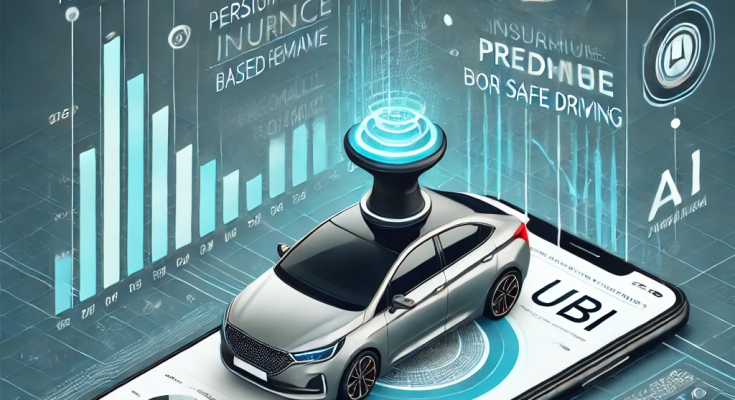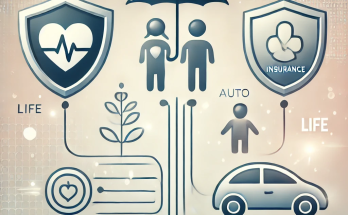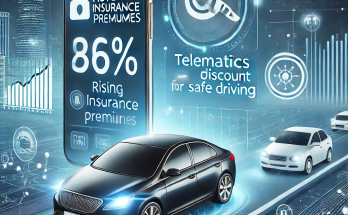Introduction
The traditional auto insurance model, where drivers pay fixed premiums based on broad risk categories, is rapidly evolving. Usage-Based Insurance (UBI) is gaining popularity, offering personalized pricing based on driving behavior, mileage, and real-time data.
As insurance premiums rise, more drivers are turning to UBI policies, also known as pay-as-you-drive (PAYD) or pay-how-you-drive (PHYD) insurance, which reward safe and low-mileage drivers with lower premiums.
In this article, we’ll explore how UBI works, its benefits and challenges, and why it’s becoming the future of auto insurance.
1. What is Usage-Based Insurance (UBI)?
UBI is an auto insurance model where premiums are calculated based on how, when, and how much a person drives. Unlike traditional insurance, which primarily considers factors like age, location, and credit score, UBI relies on real-time driving data collected through telematics devices, smartphone apps, or in-car systems.
🔹 Pay-As-You-Drive (PAYD) – Insurance costs are based on total mileage driven.
🔹 Pay-How-You-Drive (PHYD) – Premiums are adjusted based on speed, braking, acceleration, and overall driving behavior.
🔹 Hybrid UBI Models – A combination of both mileage-based and behavior-based insurance pricing.
💡 Example: A driver who commutes 5,000 miles per year and follows safe driving habits will pay less than someone who drives 15,000 miles and has frequent hard braking incidents.
2. How Does UBI Work?
Insurers use telematics technology to monitor driver behavior and calculate personalized premiums.
A. Data Collection Methods
UBI policies use one of the following methods to collect driving data:
📲 Smartphone Apps – Mobile apps track speed, braking, and driving habits using GPS.
🚗 Onboard Diagnostic Devices (OBD-II Plug-Ins) – A small device installed in the car monitors real-time vehicle performance.
🌐 Built-in Vehicle Telematics – Modern cars with connected systems (like Tesla, Ford, and GM) share data directly with insurers.
💡 Example: Progressive’s Snapshot program allows drivers to install an app that tracks their driving for six months, potentially earning discounts based on safe driving habits.
3. Benefits of UBI for Drivers & Insurers
UBI is revolutionizing auto insurance by making it more personalized, transparent, and cost-effective.
A. Lower Premiums for Safe & Low-Mileage Drivers
✅ Drivers who drive less or more cautiously pay lower premiums.
✅ Encourages safer driving habits by rewarding good behavior.
✅ Reduces costs for senior citizens, remote workers, and low-mileage drivers.
💡 Example: Studies show that safe drivers can save 15-40% on their auto insurance with UBI programs.
B. Real-Time Insights & Improved Driving Behavior
🔹 Instant feedback on driving habits helps drivers improve their skills.
🔹 Custom risk assessments enable insurers to tailor policies more accurately.
🔹 Usage-based pricing eliminates unfair premium hikes for careful drivers.
💡 Example: A UBI policy might reduce a driver’s rate if they regularly avoid hard braking, rapid acceleration, and speeding.
C. Reduced Fraud & Faster Claims Processing
🔹 Telematics can verify accident reports by analyzing real-time driving data.
🔹 Claims processing becomes faster since insurers have access to verified crash details.
🔹 Prevents fraudulent claims by detecting inconsistencies in reported incidents.
💡 Example: If a driver claims they were rear-ended at a stop sign, telematics data can confirm their speed and braking at the time of impact.
4. Challenges & Concerns of UBI
Despite its advantages, UBI has some challenges that insurers and consumers must consider.
A. Privacy Concerns & Data Security
⚠️ Drivers worry about personal data being shared or misused.
⚠️ Real-time location tracking raises privacy issues.
⚠️ Potential for insurers to penalize drivers based on minor infractions.
🔹 Solution: Insurers must ensure transparency in data collection and provide opt-out options for sensitive tracking features.
B. Potential for Higher Premiums for Risky Drivers
⚠️ Aggressive driving, frequent nighttime trips, or sudden braking can lead to higher premiums.
⚠️ Some drivers may feel they are unfairly penalized for occasional bad driving days.
🔹 Solution: UBI programs should offer grace periods for occasional driving mistakes and educate customers on how to improve their driving scores.
C. Not Suitable for All Drivers
⚠️ Rideshare drivers and commercial drivers may not benefit from UBI due to high mileage.
⚠️ Older vehicles without telematics capability may require additional hardware installation.
🔹 Solution: Insurers can offer customized UBI plans or hybrid pricing models to accommodate all types of drivers.
5. The Future of Usage-Based Insurance
UBI is expected to become the dominant model in auto insurance as technology advances.
🔮 AI-Powered Risk Assessment – AI-driven insights will refine real-time pricing models.
🔮 Integration with Self-Driving Cars – UBI will adapt to autonomous vehicle safety data.
🔮 More Flexible Policies – Drivers may soon have on-demand insurance that adjusts based on daily, weekly, or seasonal usage.
🔮 Blockchain-Based Insurance Contracts – Smart contracts will ensure transparent, tamper-proof policies.
💡 Example: In the future, insurance might be charged on a per-trip basis, allowing people to pay only when they actually drive.
Usage-Based Insurance (UBI) is transforming the auto insurance industry, offering fair, transparent, and personalized pricing based on actual driving behavior.
Key Takeaways:
✔️ UBI uses real-time data from telematics devices to calculate auto insurance premiums.
✔️ Safe and low-mileage drivers benefit the most, saving up to 40% on premiums.
✔️ UBI improves driving behavior by providing real-time feedback.
✔️ Challenges include privacy concerns, risk-based pricing, and suitability for high-mileage drivers.
✔️ The future of auto insurance will be AI-driven, flexible, and integrated with self-driving technologies.
As UBI adoption grows, drivers who embrace smart technology and responsible driving will enjoy lower premiums and greater control over their auto insurance costs.



